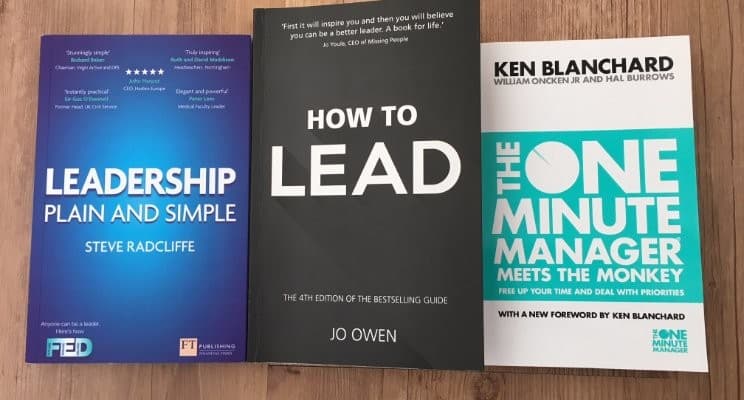There are dozens of books on the topic of difficult, crucial, challenging, important (you get the idea) conversations (I list several at the end of this article). Those times when you know you should talk to someone, but you donít. Maybe you’ve tried and it went badly. Or maybe you fear that talking will only make the situation worse. Still, there’s a feeling of being stuck, and you’d like to free up that stuck energy for more useful purposes.
What you have here is a brief synopsis of best practice strategies: a checklist of action items to think about before going into the conversation; some useful concepts to practice during the conversation; and some tips and suggestions to help your energy stay focused and flowing, including possible conversation openings.
You’ll notice one key theme throughout: you have more power than you think.
Working on Yourself: How To Prepare for the Conversation
Before going into the conversation, ask yourself some questions:
- What is your purpose for having the conversation? What do you hope to accomplish? What would be an ideal outcome?
Watch for hidden purposes. You may think you have honourable goals, like educating an employee or increasing connection with your teen, only to notice that your language is excessively critical or condescending. You think you want to support, but you end up punishing. Some purposes are more useful than others. Work on yourself so that you enter the conversation with a supportive purpose. - What assumptions are you making about this personís intentions? You may feel intimidated, belittled, ignored, disrespected, or marginalized, but be cautious about assuming that this was the speaker’s intention. Impact does not necessarily equal intent.
- What buttons of yours are being pushed? Are you more emotional than the situation warrants? Take a look at your backstory, as they say in the movies. What personal history is being triggered? You may still have the conversation, but you’ll go into it knowing that some of the heightened emotional states have to do with you.
- How is your attitude toward the conversation influencing your perception of it If you think this is going to be difficult, it probably will be. If you truly believe that whatever happens, some good will come of it, that will likely be the case. Try to adjust your attitude for maximum effectiveness.
- Who is the opponent? What might he be thinking about this situation? Is he aware of the problem? If so, how do you think he perceives it? What are his needs and fears? What solution do you think he would suggest? Begin to reframe the opponent as a partner.
- What are your needs and fears? Are there any common concerns? Could there be?
- How have you contributed to the problem? How has the other person? 4 Steps to a Successful Outcome
The majority of the work in any conflict conversation is work you do on yourself. No matter how well the conversation begins, you’ll need to stay in charge of yourself, your purpose and your emotional energy. Breathe, centre, and continue to notice when you become off centerñand choose to return. This is where your power lies. By choosing the calm, centred state, you’ll help your opponent/partner to be more centred, too. Centring is not a step; centring is how you are as you take the steps. (For more on Centering, see the Resource section at the end of the article.)
Step #1: Inquiry
Cultivate an attitude of discovery and curiosity. Pretend you don’t know anything (you don’t), and try to learn as much as possible about your opponent/partner and his point of view. Pretend you’re entertaining a visitor from another planet, and find out how things look on that planet, how certain events affect the other person, and what the values and priorities are there.
If your partner was from another planet, you’d be watching his body language and listening for unspoken energy as well. Do that here. What does he want? What is he not saying?
Let your partner talk until he is finished. Don’t interrupt except to acknowledge. Whatever you hear, don’t take it personally. It’s not really about you. Try to learn as much as you can in this phase of the conversation. You’ll get your turn, but don’t rush things.
Step #2: Acknowledgment
Acknowledgement means showing that youíve heard and understood. Try to understand the other person so well you can make his argument for him. Then do it. Explain back to him what you think he’s going for. Guess at his hopes and honour his position. He will not change unless he sees that you see where he stands. Then he might. No guarantees.
Acknowledge whatever you can, including your defensiveness if it comes up. It’s fine; it just is. You can decide later how to address it. For example, in an argument with a friend, I said: I notice I’m becoming defensive, and I think it’s because your voice just got louder and sounded angry. I just want to talk about this topic. I’m not trying to persuade you in either direction. The acknowledgement helped him (and me) to re-centre.
Acknowledgement can be difficult if we associate it with an agreement. Keep them separate. My saying, this sounds important to you, doesn’t mean I’m going to go along with your decision.
Step #3: Advocacy
When you sense your opponent/partner has expressed all his energy on the topic, it’s your turn. What can you see from your perspective that he’s missed? Help clarify your position without minimizing his. For example from what you’ve told me, I can see how you concluded that I’m, not a team player. And I think I am. When I introduce problems with a project, I’m thinking about its long-term success. I don’t mean to be a critic, though perhaps I sound like one. Maybe we can talk about how to address these issues so that my intention is clear.î
Step #4: Problem-Solving
Now you’re ready to begin building solutions. Brainstorming and continued inquiry are useful here. Ask your opponent/partner what he thinks might work. Whatever he says, find something you like and build on it. If the conversation becomes adversarial, go back to inquiry. Asking for the other’s point of view usually creates safety and encourages him to engage. If you’ve been successful in centring, adjusting your attitude, and engaging with inquiry and useful purpose, building sustainable solutions will be easy.
Practice, Practice, Practice
The art of conversation is like any art with continued the practice you acquire skill and ease. Here are some additional hints:
Tips and Suggestions:
A successful outcome will depend on two things: how you are and what you say. How you are (centred, supportive, curious, problem-solving) will greatly influence what you say.
Acknowledge emotional energy, yours and your partner’s and direct it toward a useful purpose.
Know and return to your purpose at difficult moments.
Don’t take verbal attacks personally. Help your opponent/partner come back to the centre.
Don’t assume your opponent/partner can see things from your point of view.
Practice the conversation with a friend before holding the real one.
Mentally practice the conversation. See various possibilities and visualize yourself handling them with ease. Envision the outcome you are hoping for.
Good luck.








